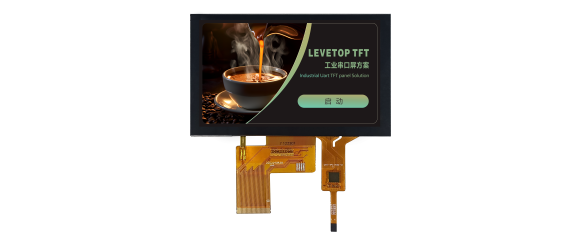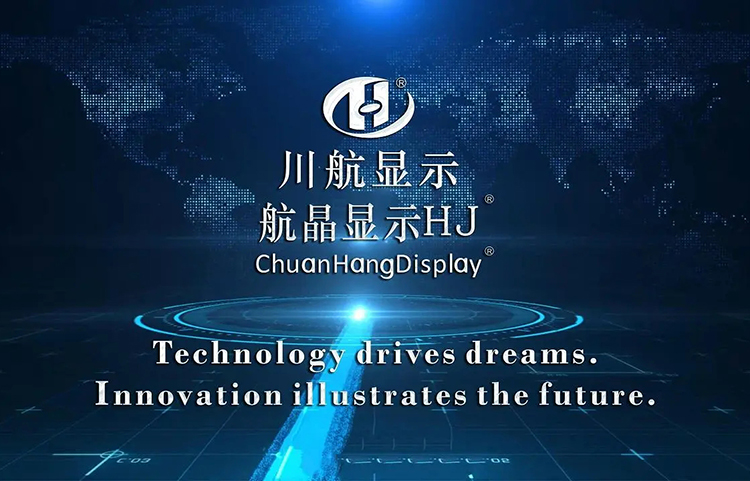In the vast world of electronic displays, the technology behind the screen you're looking at can vary significantly. Among the various construction methods, the COG LCD screen stands out as a pivotal innovation, especially for compact, reliable, and cost-effective devices. From your car's dashboard and smart thermostat to a medical blood glucose monitor, COG LCD screen technology is often the unsung hero providing clear, stable information. This article delves deep into what makes this technology tick, its benefits, and the typical issues engineers and purchasers might encounter, with a focus on solutions from leading manufacturers like chuanhangdisplay.

COG stands for "Chip-On-Glass," a sophisticated method of LCD module assembly. To understand it, it helps to first consider its predecessor: the COB (Chip-On-Board) LCD.
In a standard COB LCD, the driver Integrated Circuits (ICs) that control the pixels are mounted on a separate Printed Circuit Board (PCB). This PCB is then connected to the glass LCD panel via a flexible ribbon cable, like a TAB (Tape Automated Bonding) or Heat Seal Connector. This assembly works well but adds bulk, complexity, and potential points of failure.
A COG LCD screen revolutionizes this design. In the COG process, the driver ICs are directly bonded onto the glass substrate of the LCD itself using a conductive adhesive. This is achieved through a precise automated process that places the tiny silicon chips directly onto the designated contact points on the glass.
The result is a dramatically more integrated and compact unit. The bulky PCB and the connecting ribbons are eliminated, leading to a thinner, lighter, and more robust display module. This direct attachment also improves electrical performance by reducing signal transmission distance and interference.
The decision to use a COG LCD screen is driven by several compelling benefits that address the core demands of modern electronics design.
1. Superior Space Efficiency and Slim Profile: This is the most significant advantage. By eliminating the external PCB and connectors, the overall module footprint is drastically reduced. This makes COG technology the ideal choice for ultra-compact and slim devices where internal real estate is at a premium.
2. Enhanced Reliability and Durability: Fewer physical connections mean fewer potential points of failure. The absence of a flexible cable that can fatigue or a connector that can loosen over time makes the COG LCD screen highly resistant to shock, vibration, and mechanical stress. This inherent robustness is crucial for automotive, industrial, and portable applications.
3. Improved Electrical Performance: Shorter electrical pathways between the driver IC and the glass electrodes reduce electromagnetic interference (EMI), cross-talk, and signal attenuation. This often results in better contrast, faster response times, and a more stable image.
4. Cost-Effectiveness in High-Volume Production: While the initial setup and tooling for COG can be complex, the per-unit cost becomes very competitive for large production runs. Using less material (no separate PCB or connectors) simplifies the Bill of Materials (BOM) and reduces assembly time.
5. Simplified Integration: For product designers, a COG module is often a simpler component to integrate into a final product. It comes as a more complete unit, requiring the designer to primarily focus on providing power and data signals through its direct interface.

The unique blend of compactness, reliability, and performance makes the COG LCD screen a go-to solution across numerous industries.
Consumer Electronics: Smart home devices (thermostats, security panels), portable instruments, calculators, and appliance displays.
Automotive: Dashboard instrument clusters, infotainment systems, and control panels for seats and climate control.
Medical Devices: Portable monitors, diagnostic equipment, and drug delivery systems where reliability is non-negotiable.
Industrial Equipment: Handheld meters, control panels for machinery, and portable measurement tools that face harsh environments.
Internet of Things (IoT): A vast range of connected sensors and devices that require a small, low-power display interface.
Brands like chuanhangdisplay specialize in providing high-quality COG LCD modules tailored to these diverse sectors, offering custom solutions for specific size, interface, and environmental requirements.
Despite their many advantages, COG LCDs are not without their challenges. Understanding these is key to successful implementation and troubleshooting.
1. Vulnerability to Electrostatic Discharge (ESD): The driver ICs, being directly on the glass, are more exposed and highly sensitive to ESD during handling and assembly. A single electrostatic shock can easily damage the chip, rendering the entire display useless. Strict ESD protection protocols are mandatory throughout the manufacturing and assembly process.
2. Complex and Costly Repairs: The highly integrated nature of a COG LCD screen is a double-edged sword. If the driver IC fails, it is extremely difficult, if not impossible, to replace it. Unlike a COB display where you might replace just the PCB, a faulty COG module typically requires a complete unit replacement.
3. Glass Substrate Stress: The direct bonding of the silicon chip to the glass can create mechanical stress, especially under significant temperature fluctuations. The different thermal expansion coefficients of silicon and glass can lead to cracking or bonding failure if not properly managed in the design phase.
4. Limited Customization and Flexibility: Once a COG design is finalized and fabricated, making changes is much harder than with a COB design. Altering the display parameters or interface might require a completely new glass mask set, which is expensive and time-consuming.
5. Initial Tooling and NRE Costs: The process of creating the masks and fixtures for bonding the ICs to the glass involves high Non-Recurring Engineering (NRE) costs. This makes COG less economical for very low-volume prototype projects, though it pays off handsomely in mass production.
Mitigating the challenges of COG technology hinges on working with an experienced and reputable manufacturer. This is where a partner like chuanhangdisplay proves invaluable. A professional manufacturer will:
Implement Rigorous ESD Controls: Ensuring every module is produced and handled in a safe environment from start to finish.
Employ Robust Bonding Techniques: Using proven methods and materials to ensure the IC-glass bond can withstand thermal cycling and mechanical stress.
Provide Comprehensive Design Support: Helping you optimize your design from the beginning to avoid costly revisions and ensure reliability.
Conduct Thorough Testing: Subjecting modules to environmental stress tests (temperature, humidity, vibration) to weed out early failures and guarantee performance.
Offer Clear Documentation: Providing detailed datasheets and application notes for seamless integration into your product.
By choosing a trusted supplier, you leverage their expertise to navigate the complexities of COG LCD technology, ensuring you get all the benefits without the common pitfalls.
The COG LCD screen represents a brilliant feat of engineering miniaturization and integration. Its ability to deliver a compact, reliable, and high-performance display solution has made it a cornerstone of modern electronic device design. While it presents certain challenges like ESD sensitivity and repairability, these are far outweighed by its advantages for mass-produced applications. For engineers and product developers, understanding these intricacies is the first step. The second, and most crucial, is partnering with an expert manufacturer like chuanhangdisplay to transform this powerful technology into a successful and reliable component of your next innovative product.